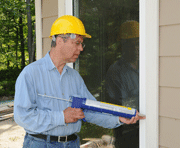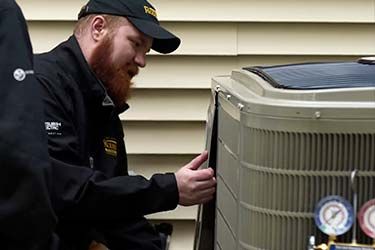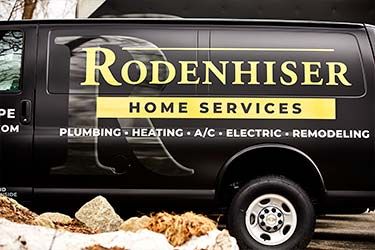



Air leaks in your home can cost you money by letting cold air out and hot air in at the wrong times.

An air leak forces your heating and air conditioning system to work harder to provide proper airflow and consistent temperatures in your home. Sealing air leaks is a cost-effective way to increase energy efficiency and comfort in your home and, according to the Environmental Protection Agency, can save the average homeowner up to 10 percent on heating and cooling costs.
There are many areas in your home where air leaks can occur. You can easily check some areas yourself, but other areas may be hidden or difficult to access, and you may need to call a professional technician for help.
Here's where you should check for air leaks. Around:
Once you find leaky areas, most cracks and gaps can be easily sealed using caulk for smaller leaks, or expanding foam spray for larger gaps. Apply weatherstripping around doors to create a tight seal.
Taking the time to seal up air leaks will result in the following benefits:
It's a good idea to call a professional who can do an energy assessment of your home. Using special equipment, such as a blower door or thermal camera, a professional can conduct a comprehensive test and find leaks that are costing you money.
If you would like further information on detecting air leaks and increasing energy efficiency in your home, please call us at Rodenhiser Plumbing, Heating & Air Conditioning. We service the Route 495/128 area of Medway MA.
Our goal is to help educate our customers about energy and home comfort issues (specific to HVAC systems). For more information about other HVAC topics, download our free Home Comfort Solutions Guide.
Image via Shutterstock.com





Both Alex and Patrick were knowledgeable, courteous, and professional. They made a change that might have solved the recent problem and have structured a more complete solution. We agreed to this...
Mike was thorough, thoughtful and considerate. Covered their shoes before entering, surveyed my issue and provided an explanation of the services and costs. Great Job!
Alex did a great job providing an explanation of the services provided and went out of his way to offer assistance/advice on other issues outside of our scheduled maintenance visit.
Brian did an excellent job inspecting our 18-year old boiler and replacing some of the accessory hardware that needed it, he also adjusted the outgoing hot water settings for our radiators and...
Rodenhiser is my one stop shop!!! They take care of my HVAC, electrical, and plumbing issues & are always helpful addressing any questions I may have about the systems in my house! Everyone...
Chris G. and Nick V. showed up bright and early at 8am to fix my water heater issue. They were on time, polite and were able to fix an issue that has been plaguing my house for a good year. They...
When you are looking for plumbing, electrical, heating or air conditioning in the Route 495 / 128 area, you will be delighted that you called Medway MA' trusted choice since 1928.
With a total dedication to professional workmanship and excellent service, discover why families and businesses continue to trust Rodenhiser after generations of service







